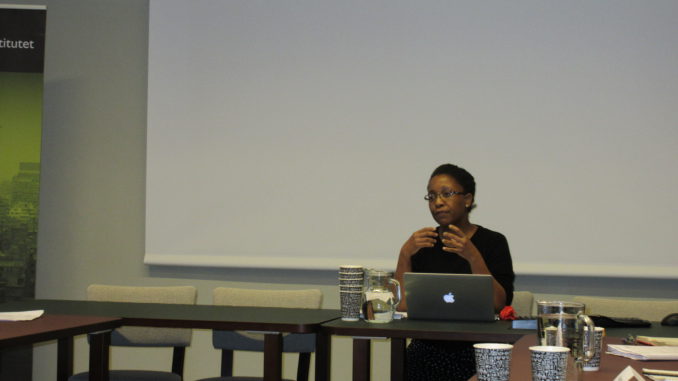
Patience Mususa is a close partner of the Comparing the Copperbelt project, and a well-established researcher of the Copperbelt. She recently hosted the project’s first workshop in Uppsala. Her work corresponds with the project’s approach – Patience is also employing a cross-border perspective. She is interested in a spatial re-conceptualization of the copper mining towns. Read how she describes her work in her own words here.
Making New Mining Towns in Africa’s Copperbelt
Patience Mususa, Senior Researcher at the Nordic Africa Institute, Uppsala
New mining towns are rapidly emerging In Africa’s Copperbelt, a region that cuts across south-eastern D.R. Congo and the central and western parts of northern Zambia. This wave of urbanisation has been driven by a boom in commodity prices, including copper, that started around 2004. The last time this region saw this extent of investment in the extractive industry, was at the turn of the 20th century. That was a period that catalysed the industrialisation of copper extraction, which had long been mined in the area, and spurred an unprecedented scale of urbanisation. These changes gave rise to a new cohort of colonial sociological studies on urban Africa, widely known as the Manchester school in south-central Africa.
Then as now, a complex constellation of political, economic and social forces influence the formation of these new towns, inserted into the regional and global geopolitics of resource extraction. The 2008 global financial crisis slowed down investment in planned infrastructure, both for the new towns and the regeneration of the older ones. Something similar had occurred in the 1930s following the 1929 crash.
My study follows these processes. It focuses on the practices of planners, architects, engineers and other built environment professionals in the making of these settlements. It seeks to elucidate how the visions of these practitioners compete with their corporate clients, the state, the interests of the people who come to live there, including those that have a prior claim to these lands. It aims to explore how shifts in the political social and economic environment affect the direction of planning these towns.
I draw on an interdisciplinary approach to examine the practice and politics of the formation of place, engaging with theoretical and methodological perspectives from spatial studies in anthropology, human geography and history, as well as architecture and urban design. By focusing on built environment practitioners, I aim to highlight how these actors broker various interests (their own, the clients, and other actors), and deal within certain political and material constraints, to create places that not only radically change the physical environment, but also socially engineer new ways of life.
These mining towns are primarily set up as extractive locales. My study also allows to illuminate the narratives that justify the dispossession that comes with the extractive industry. What continuities are there with the colonial past? The mineral exploitation of the Copperbelt was catalysed by the capitalist and imperial ambitions of personalities like Cecil John Rhodes from Britain and King Leopold II of Belgium. Through their corporate interests of the British South Africa company and the Union Minière du Haut-Katanga, Rhodes and Leopold II sought to acquire territory for extraction, and stamp their vision of empire on it. How did the various actors such as the engineers and architects engaged by these men and their successors inscribe these drives into the landscape? How did the political climate of workers’ and decolonisation struggle affect this process? How do contemporary struggles and political contestations around mining activity in this region affect the creation of mining settlements?
Urban designers and architects working during the period of the establishment of the industrial Copperbelt were influenced by the dominant ideas of innovative planners like Ebenezer Howard who led the garden city movement. Howard’s vision of the garden city was that of a socialist collective, and in there lay the paradox. The mining towns that emerged on the Copperbelt resembled, in form, the idea of the ‘garden town’, but in ideological principle where capitalist enclaves spatially organised to be exclusive, drawing on the colonial racial hierarchies that still texture many African cities.
In today’s planning, progressive ideals of environmentally green cities, and social inclusiveness are influencing urban design practices. They are also being enshrined as part of best global practice in the planning of settlements. How are these principles being put into practice in the new mining towns, and the revival of old ones on the Copperbelt? My project explores these questions.
